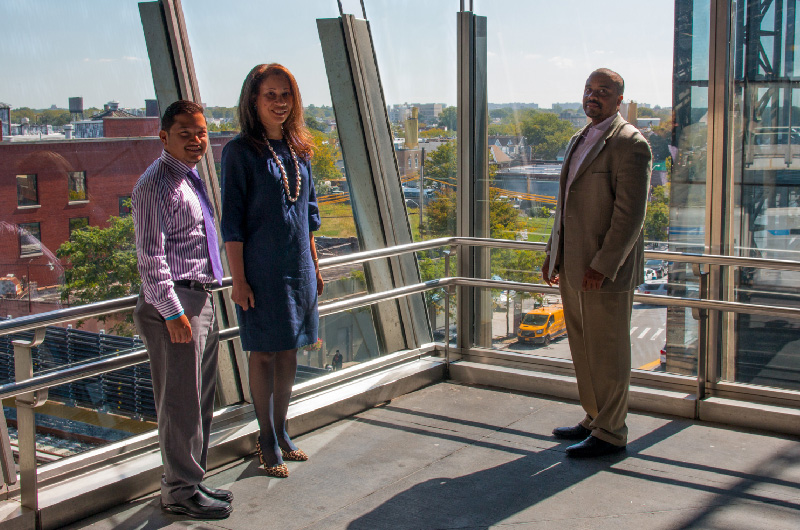
 OER Community311
OER Community311 Search all NYC.gov websites
Search all NYC.gov websites
Case Study 19
Case Study 19
Greater Jamaica Works with Two Agencies to Reposition a Property

Background
The Greater Jamaica Development Corporation (GJDC), a savvy nonprofit corporation seeking to attract developers to build in Jamaica, Queens, completed a state-funded planning program in 2016 for the Jamaica station area. It focused on economic revitalization and mixed-use transit-oriented development. One of its development sites is a 75,000-square-foot private property adjacent to the Air Train to John F. Kennedy Airport. The site, which has been vacant and blighted since the mid-1990s, formerly housed a meatpacking plant in a building insulated with asbestos. The community had serious concerns about safety issues related to trespassing on the property and expressed a strong desire to see the property revitalized.Strategy
GJDC actively marketed the site which attracted a developer seeking to relocate from Midtown Manhattan to the property in 2006. The developer responded to a procurement that called for an “International Merchandise Mart” to be built on the property that would house fashion accessory, textile, and home decor vendors. The developer proposed a 13-story, $260 million wholesale merchandise mart in a 979,000-square-foot building with10 floors of showroom space.The developer signed a 99-year lease with the property owner, yet struggled to secure financing to remediate and redevelop the site. Recognizing the value this project could bring their community, GJDC intervened to help address the developer’s challenges and the community’s concerns. The organization asked the New York City Economic Development Corporation to fund the site’s environmental cleanup and secured $4 million to cover demolition and cleanup, which was performed between 2006 and 2007. GJDC highlighted the strong economic development potential this project would have on the area and the project’s impact on job creation and international trade.
Besides seeking City remediation funding, GJDC successfully advocated with the New York City Department of City Planning to rezone the area from a low-density manufacturing district (M-1) to a high-density commercial district (C-64), which greatly increased the property’s buildable area. Once the rezoning was approved, the developer partnered with three firms to enhance the development team’s capacity to finance and manage the project.
Despite the rezoning and demolition of existing buildings at the site, the developer was unable to finance the project following the 2008 recession. The developer defaulted on the lease. With the upturn in the economy and area and regional developers now considering properties in downtown Jamaica, the site is a much more attractive site for development today.
Conclusion
Despite the challenges, the added-value leveraged by a non-profit community developer working with public agencies advanced the site towards development. Several developers are currently interested in using the site to construct a new mixed use building with affordable housing and retail space.Related Development Strategy


